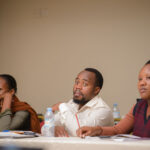Each year, over 150 million people are affected by disasters, according to a recent UN report. For those who were already vulnerable due to poverty or discrimination, the effects can be particularly devastating. Here are three reasons why grassroots activists are often vital to protecting both the lives and rights of the most vulnerable communities during relief and rebuilding efforts.
1) Activists already understand the local Area
When an earthquake, flooding, or war destroys an area, everybody has a part to play in helping communities get back on their feet—from governments and international aid agencies to ordinary people around the world. But a disaster is one of the most challenging times to figure out where to start. Responders often need to set up new infrastructure and get to up to speed quickly.
Local activists already understand the physical area, cultural and language considerations, and local community. For example, within days of the recent earthquake in Morocco, as rescuers were still struggling to reach remote areas, El Amane Association, a women’s rights group, organized a helicopter to do rescue and relief runs. The chopper flew injured people pulled from the rubble to hospitals. It then returned with prepared food and other supplies for people left homeless.
2) Activists are committed to making sure no one is left behind
Grassroots groups tend to be deeply rooted in communities that are already facing discrimination or other forms of injustice—like migrants, women, children, ethnic minorities, LGBTQ+ people, and those living in poverty. Sadly, these groups are most likely to be left out of traditional forms of aid in emergencies due to politics, discrimination, language barriers, or loss of identifying documents.
Time and again, we see activists filling in the gaps, making sure that marginalized communities’ needs such as food, water, clothing, and medicine are met when disaster strikes. For example, when the pandemic began, Fund grantee Karen Women’s Organization in Myanmar worked to provide essential supplies and translated COVID-19 information to people in displacement camps who were excluded from the government response.
3) They remain when everyone else goes home
News headlines and social media stories change every minute. Within a few days, cameras may arrive and depart the scene of a disaster when the next big news story breaks. Even international aid organizations often must move on or aren’t always equipped to support communities for the years of rebuilding that follow.
Yet, even when everyone else has gone and the world’s attention has shifted elsewhere, grassroots activists remain. They continue to work for long-term solutions to boost economic opportunities, rebuild equitably, and tackle issues like racism, homophobia, poverty, and climate change at their roots. The Fund frequently supports groups for five or even ten years, providing flexible funding as well as training and strategic assistance, so that activists can create social change that lasts.
When a disaster hits, ensuring that aid reaches those who need it most can be a huge challenge. The Fund was founded to get financial support to hard-to-reach places and has built trusted relationships with grassroots groups around the world for 20 years. And activists stand ready to call out corruption if aid never makes its way to the ground.
We need your support to make sure that activists can respond quickly and effectively when crisis arises. When you donate today, 100 percent of your gift will go directly to Fund grantees and staff in Morocco as they respond to the devastating earthquake.


